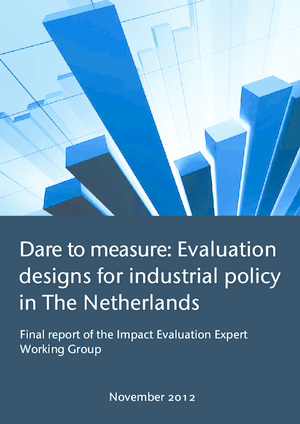'Dare to measure', Evaluation designs for industrial policy in The Netherlands
The government’s aim with industrial policy is to improve the entrepreneurial climate in the Netherlands. This policy derives its legitimacy from the presence of market failures, such as externalities, imperfect information and coordination failure. An important consideration is that the costs of government intervention must not exceed those of market failure. The government has a fairly extensive budget for various policy measures. Furthermore, the large number of companies that come into contact with industrial policy carries an obligation to determine the effectiveness of the various policy measures with the greatest possible accuracy.
The main task of the Impact Evaluation Expert Working Group is to systematically analyse possible ways of evaluating the direct impact (output) of several of the Ministry of Economic Affairs’ policy measures. The question is what proportion of the observed output is attributable to application of the policy instrument. The answer might be the volume of additional R&D that companies are persuaded to perform because of the Research & Development Deduction (RDA), or the number of newly qualified engineers and technicians at upper secondary vocational education level destined for the top sectors through the Centres for Innovative Craftsmanship (CIV). Evaluation of the effectiveness at output level can be seen as the first step in evaluating an instrument’s ultimate social and macroeconomic impact: the effects on outcome level. However, the influence of the business cycle, international economic trends and other exogenous factors render measuring the outcome effects of policy instruments extraordinarily difficult.
